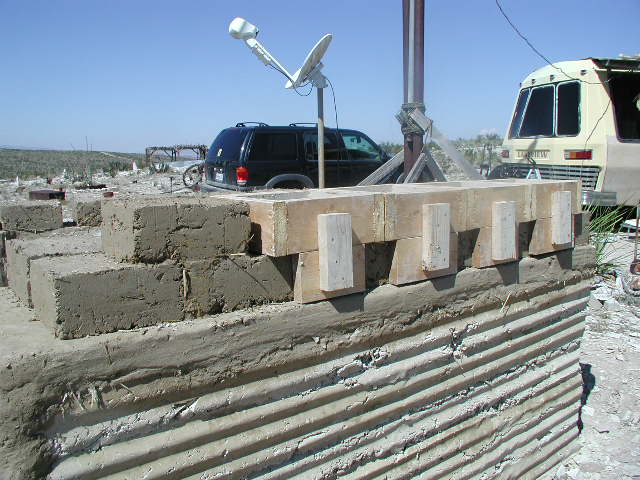
 13
13









Buy Our Book! Food Web: Concept - Raising Food the Right Way. Learn make more food with less inputs
Off Grid Homesteading - latest updates and projects from our off grid homestead
 1
1




Windward Sustainability Education and Research Center
Permaculture Apprenticeships at Windward
America's First Permaculture Cemetery? Herland Forest Natural Burial Cemetery
 1
1




 1
1




we don't have a problem with lack of water we have a problem with mismanagement
beavers the original permies farmers
If there is no one around to smell you ,do you really stink!
 1
1








Michael Bushman wrote:Not trying to be a smartass but how is this different/better/easier from a rammed earth wall since the adobe is not first dried before stacking, it goes into the wall wet? I like the fact that the mold is simple and the amount of earth moved is smaller increments.
Buy Our Book! Food Web: Concept - Raising Food the Right Way. Learn make more food with less inputs
Off Grid Homesteading - latest updates and projects from our off grid homestead
 1
1








'What we do now echoes in eternity.' Marcus Aurelius
How Permies Works Dr. Redhawk's Epic Soil Series




Joylynn Hardesty wrote:How old is your structure? Does it stand the test of time?
Buy Our Book! Food Web: Concept - Raising Food the Right Way. Learn make more food with less inputs
Off Grid Homesteading - latest updates and projects from our off grid homestead




 2
2




My suburban building and homesteading blog https://offgridburbia.com/
 1
1




Plans are only good intentions unless they immediately degenerate into hard work -Peter Drucker




Joseph Johnson wrote:Nice work Aaron. Just curious though, how long did it take you to put up the walls. just the block work?
My suburban building and homesteading blog https://offgridburbia.com/




Plans are only good intentions unless they immediately degenerate into hard work -Peter Drucker




Joseph Johnson wrote:We did 5 test bricks 12"x14"x3-1/2" just to see if our soil was good for adobes. We did this at 9pm and the mold was pulled after 20 minutes. at 11am the following day I stood them up on end and couldnt resist taking one and doing a 4 ft drop test. It cracked across the middle but didnt break in half. At noon the next day I broke it in half and found it to be almost dry almost to the middle. at noon the next day I dropped another and it suffered only minor chipping on the edge that hit first. Now these were not stabilized and and the only thing we added to the soil was straw and water. the next day I took one and dropped it from 4ft twice and kinda tossed it out in front of me several feet with no damage. it wasnt until my sister flew into the driveway and ran it over with the car that it got any damage. I know we wont get it that dry and solid so quickly going directly on the wall but I am wondering if 5-6 day between courses would be enough?
My suburban building and homesteading blog https://offgridburbia.com/




My suburban building and homesteading blog https://offgridburbia.com/








 4
4




'What we do now echoes in eternity.' Marcus Aurelius
How Permies Works Dr. Redhawk's Epic Soil Series
 10
10




Joylynn Hardesty wrote:Hello Aaron. How is your shed doing, 7 years later? Do you remember the ratio of clay to straw that you used?
My suburban building and homesteading blog https://offgridburbia.com/
 4
4





|
A day job? In an office? My worst nightmare! Comfort me tiny ad!
Rocket Mass Heater Resources Wiki
https://permies.com/w/rmh-resources
|







